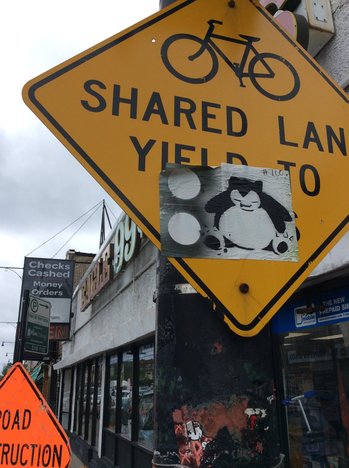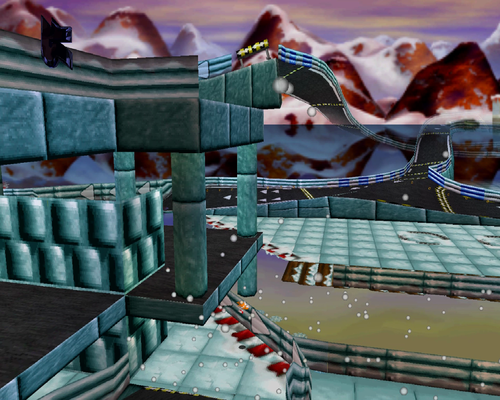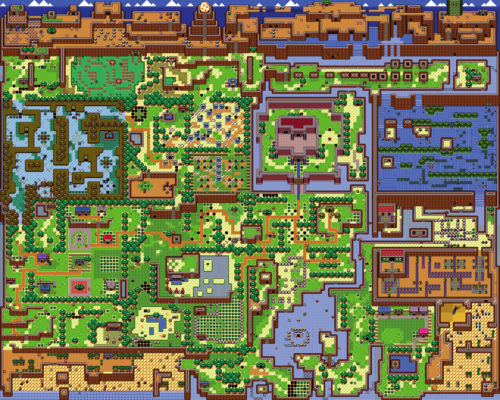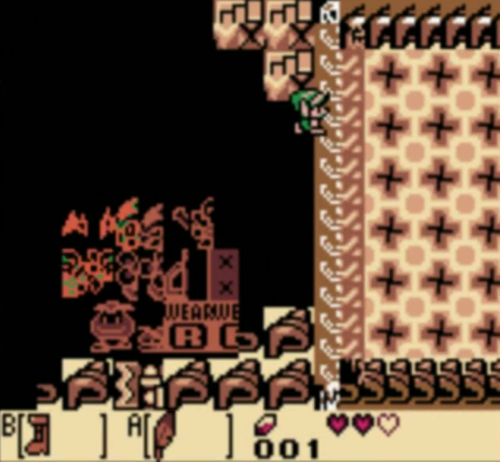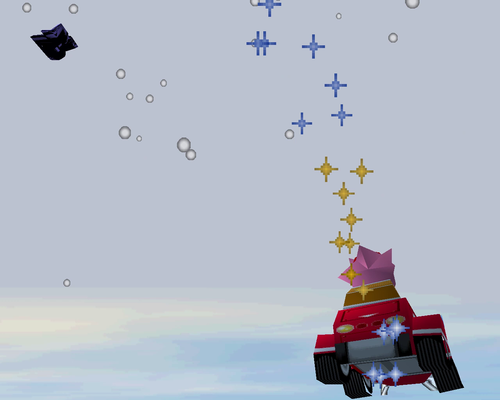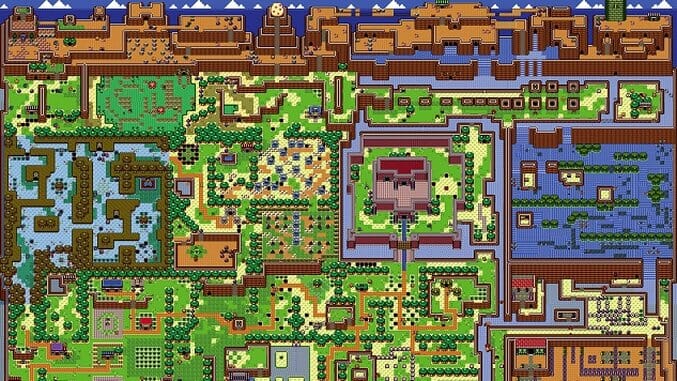
I hadn’t been in Albany Park in ten years. I’d driven by, maybe passed it on my way to other places, but I’d never stopped to take it in, give it time to sink back into me. As we drove down the street I gestured at the shops and buildings we passed, pointing out to my partner all the places I recognized. The grocery stores my family used to shop at, the empty building that used to be a stationery store, the thrift store we used to get our clothes from. It had been ten years since I spent any significant time in Albany Park, the Chicago neighborhood that I’d grown up in.
We parked on the sidewalk near a restaurant, and she pulled out her tablet to hit up a Pokéstop and catch a few Pokémon. The game pointed us to two lion reliefs on the side of the building.
Around the corner on one of the street signs someone had sprayed a stencil of a Snorlax.
After visiting the park near one of my old houses, I decided to take a walk through Radical City, one of the five islands of Sonic R. In the time trial mode, the city was empty of other racers, the time limit only a cosmetic consideration. In my head I plotted out the events that happened in here. I loitered at the finish line, where I arrogantly waited, taunting Gustavo, a kid in my sixth grade class, as he trailed behind in the race. He caught up to me and crossed the finish line before I could accelerate over it, having a good laugh at how my hubris cost me the win. It was snowing. I remembered the gap in a fence, past the first gate at the bottom of the hill, across the residential area. Under normal circumstances, you couldn’t jump it, but the water below had frozen now and you could use that gap to skip half the race.
It reminded me of the shortcut through the park I took to and from school during the winter, climbing over the piles of snow made by snow plowing.
Tita Linda, one of my mom’s church friends, gave us Link’s Awakening without ceremony. She asked us the following week if we had found Zelda, bewildered when we told her that Zelda, in fact, did not make an appearance in this game. The church itself was an unassuming place, tucked away in a small community center building next to a 7-11 we bought Pokémon cards at after service. Not quite the grand design you’d associate with the image of a church, but maybe enough to lend an air of holiness to the little world on that cartridge.
Ceremony, it turned out, wasn’t of much importance to Link’s Awakening either. An afterhours project, Link’s Awakening was a Twin Peaks-esque interpretation of what a Zelda game was, with off kilter citizens and bewildering plot developments. There was space for simple rituals on Koholint Island, though. Not the ones established for years after in A Link to the Past, but ones revolving around Mabe Village, where your adventure always seemed to return you to. Like the neighborhood I lived in, I mapped out Koholint Island by walking to and from that village. The surrounding locations were etched in memory by the number of footsteps taken towards the next crossing, the sequence of turns to get to a friend’s house, or the landmarks on the way.
Go west from Marin’s house, past Madam MeowMeow’s and the fishing hole. You’ll find a cliff blocked by three bushes that will drop you into a well. Go north from there into the Lost Woods and towards the Tail Key.
Sometimes those digital streets felt more real than the ones I lived on. My family lived in a state of flux back then, perpetually moving from home to home almost every other year, as far as I could remember. Maybe it was my dad’s stubborn personality that kept him at odds with the landlords, or his continually changing career path. Whatever the story, at some point these digital places became more familiar to me than the homes we constantly were uprooted from. I could tell you stories about the people and locations in them, give you better directions within them than I could my own block. Those islands were an anchor in a situation that kept sweeping us away to unfamiliar places.
Eventually, that anchor would break. The things that kept those islands real, their static, familiar nature, were the same things that would take them apart. Sonic R’s racetracks were marked by simple boundaries, fences, buoys, that made it seem as if there was more beyond what I had been allowed to run around in. There was at least one place you could break that boundary as well, so it had to be possible to go beyond it. Sonic and friends could jump those barriers and run across those fields, or swim into the sunset, if they really wanted to. They just had a race to win right now.
On the island of Koholint, I did learn to break those boundaries. By pressing SELECT as you entered a new screen, you could cause the world to keep scrolling while keeping Link’s relative position the same. It would allow you to bypass hazards out of order, or reach areas that you were never meant to. In some places it would allow you to reach locations on the map that weren’t supposed to exist, resulting in a glitched world of visual garbage as the game attempted to parse your location. It let me keep returning to the world long after the adventure was done, to find new places in what should have been a static place. Breaking it like that made it feel tangible, as if I had pushed up against a wall and felt the brickwork that made it up. But you can’t keep taking bricks with you and expect the wall to stay up.
At some point the process of glitching Link’s Awakening corrupted the data to an unrecognizable point. I returned the next day to find every save wiped, the game returned to its beginning state. But I wouldn’t give up on that glitch world, so I accepted this as a consequence of my need to see more. After all, my family and I had already become used to starting over.
As we headed home I thought about how much of Albany Park lined up with my memories of it. Sure, there were the threats of gentrification, a suspiciously new building here, a Starbucks encroaching on that corner, but for the most part, the neighborhood had sustained itself, even as businesses in the wealthier suburbs I lived in had frequently closed down. Andy’s Fruit Market, Jafar Sweets, and the streets were still home to everything from supermercados to South Asian and Korean cuisine. The library I went to as a kid was still there, except now it had received a modern glass and metal facade. It had changed, but it was familiar and just how I remembered—more or less.
Amr Al-Aaser is an Egyptian-Filipino American writer and artist operating out of Chicago. They also co-edit Deorbital> and Clickbliss. You can find them rambling about robots on Twitter @siegarettes.
